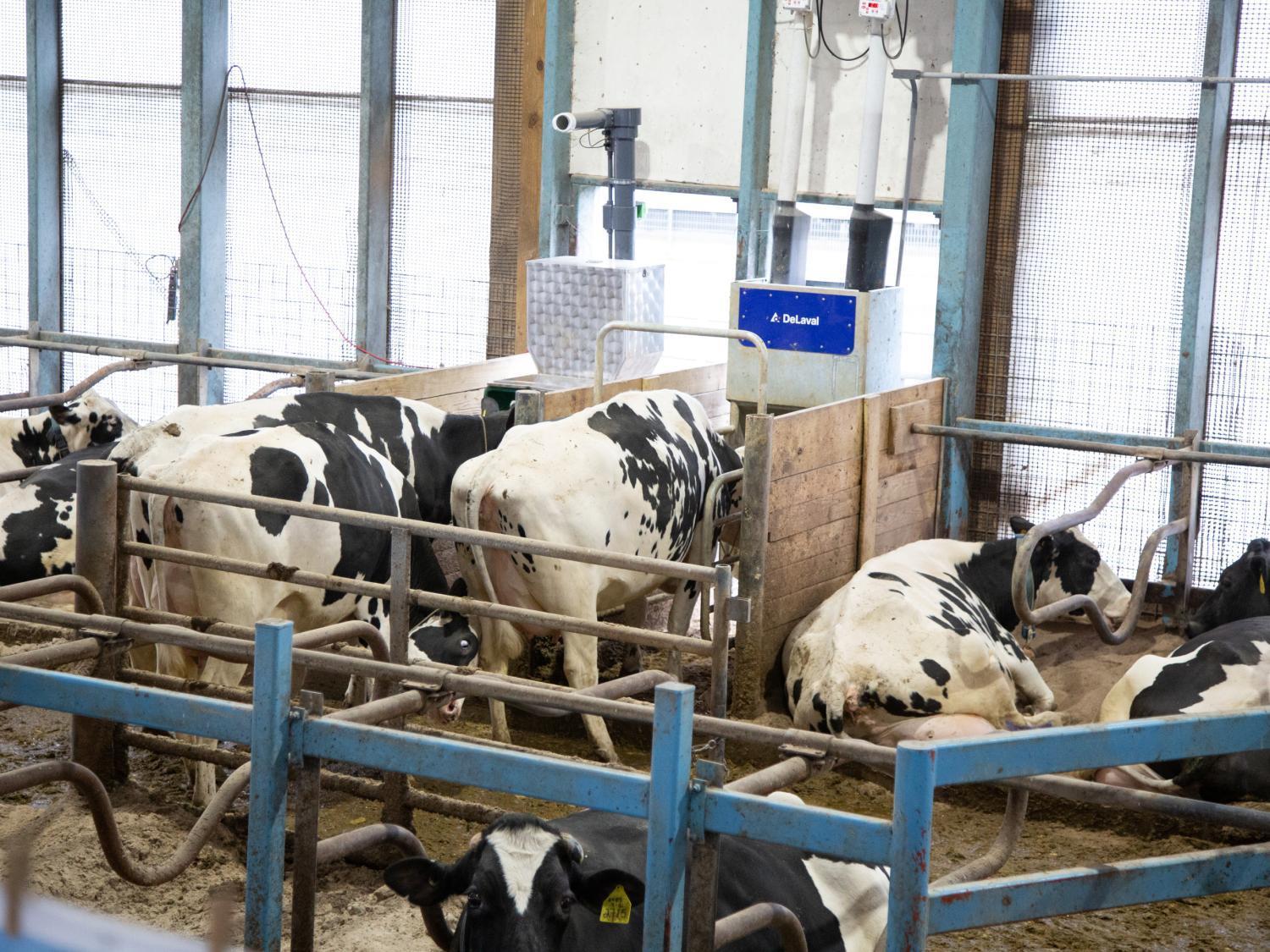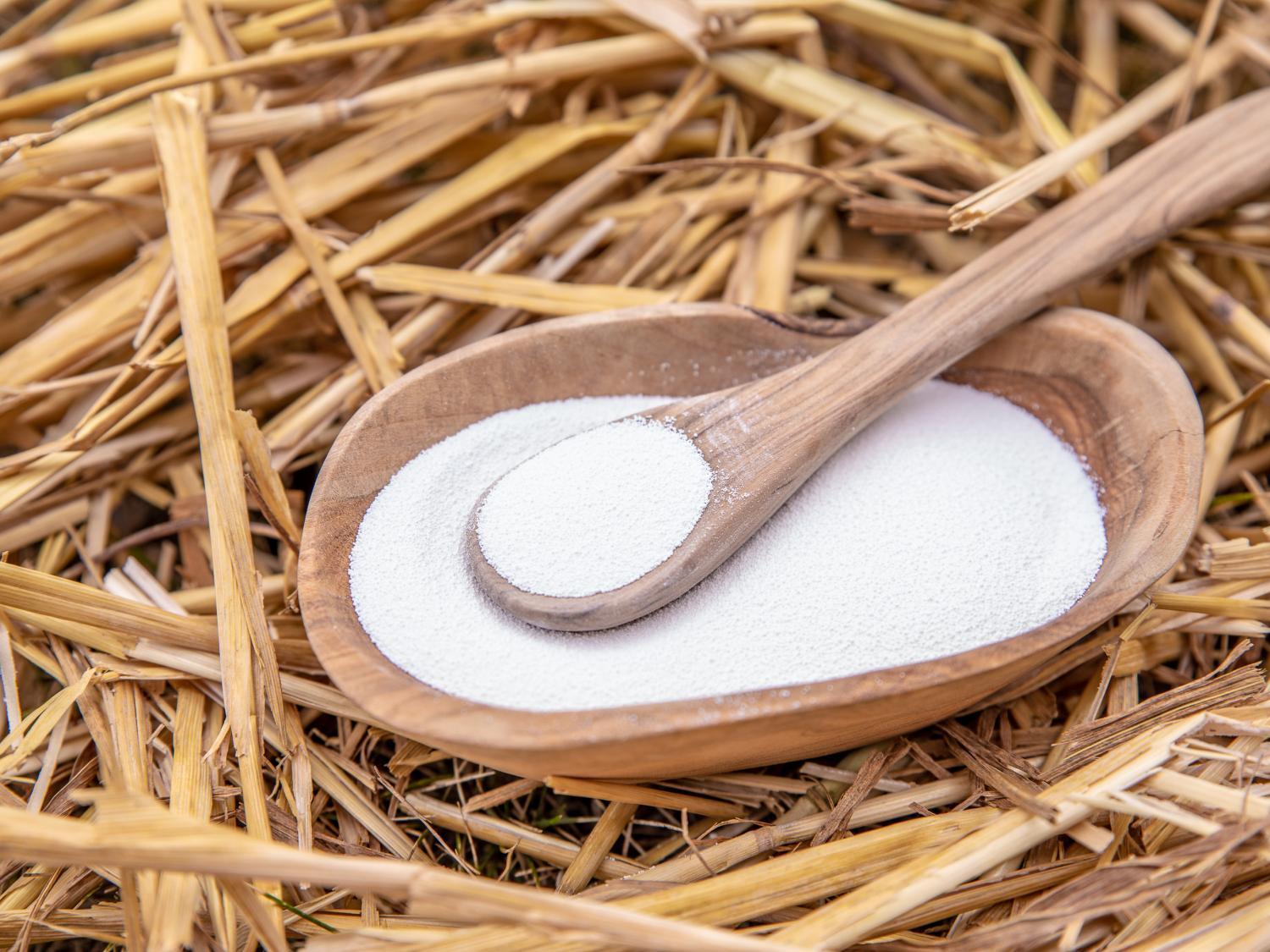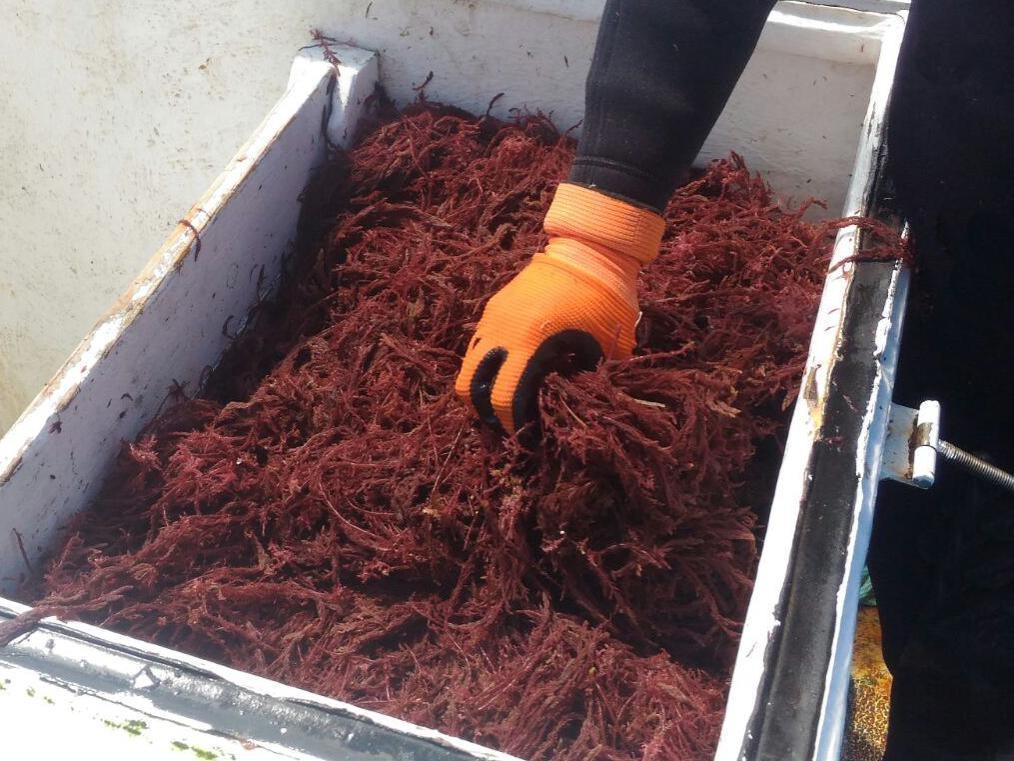By Jeff Mulhollem
Alex Hristov, Penn State distinguished professor of dairy nutrition, has received a $2 million grant from the U.S. Department of Agriculture to conduct studies to determine whether supplementing the feed of lactating dairy cows with either 3-Nitrooxypropanol or a species of red seaweed reduces the amount of methane emitted by the animals in the long-term.
The award, coming through USDA’s Natural Resource Conservation Service, will fund a three-year project that will be conducted with lactating dairy cows at different sites and with varied feed-management conditions. The study will extend over two lactations — almost two years — to determine the long-term effects of feed additives on mitigating enteric, or internal, methane production.
Hristov’s research group in the College of Agricultural Sciences has been experimenting with supplementing the feed of high-performing dairy cows with additives ranging from seaweed to garlic and oregano oils to capsaicin from chili peppers in a nearly two-decades-long effort to reduce the amount of methane created by microbes in their rumens. The methane — a potent greenhouse gas — is released into the atmosphere by the cows belching.

The average dairy cow belches approximately 350 pounds of methane, a potent greenhouse gas, each year.
The supplements to be tested in this research project are very different, but in short-term studies, both have sharply reduced the amount of methane that results from the fermentation occurring in the cow’s rumen. That process allows the animal to consume and utilize fibrous feeds and by-products that cannot be digested by humans or other, simple-stomach farm animals.
The methane inhibitor 3-Nitrooxypropanol (often referred to as 3-NOP, with the commercial name Bovaer) was developed by DSM, a giant Dutch corporation active in the fields of animal health and nutrition. 3-NOP has been approved for use as a feed additive in Europe and some Latin American countries such as Brazil and Chile but has not yet been approved by the U.S. Food and Drug Administration.
Most, if not all, of the research with 3-NOP in dairy cows in the U.S. has been conducted at Penn State and some of the data were used for the European registration of the inhibitor. The compound acts on a key enzyme called methyl CoM reductase, responsible for the last step of methane synthesis in the rumen. In a 2021 review of Penn State’s data published by Hristov’s group, 3-NOP reduced enteric methane emissions by 25 to 29%
3-NOP is rapidly metabolized by the cow, and work at Penn State has demonstrated that it needs to be continuously supplied to the rumen with feed to effectively decrease methane production over the 24-hour feeding cycle, Hristov explained.

This methane inhibitor feed supplement 3-Nitrooxypropanol (often referred to as 3-NOP, with the commercial name Bovaer) was developed by DSM, a giant Dutch corporation active in the fields of animal health and nutrition.
Dairy farmers are likely to adopt supplementing their cows’ feed with 3-NOP, Hristov indicated, because it results in an increase in milk fat. “The energy of methane has to go somewhere,” he said. “In our data — and we have the most data with dairy cows in the world — it seems like that energy is going toward milk fat synthesis, which is beneficial to the producer.”
The red seaweed to be tested in this study is Asparagopsis taxiformis, which grows in some tropical ocean waters. In a 2021 study conducted by Hristov’s research group, in trials with lactating dairy cows, Asparagopsis taxiformis decreased methane emission by up to 63% but also decreased feed intake and milk yield when fed at 0.5% of feed dry-matter intake. There were also questions about whether feeding the cows seaweed affected milk composition and taste.
Asparagopsis taxiformis appears to be an impractical source for a feed supplement, unless mass-produced in aquaculture conditions, Hristov pointed out. However, USDA wants Penn State to continue evaluating the seaweed’s potential in long-term trials, given its efficacy mitigating enteric methane in short-term studies. If widely adopted as a livestock feed supplement, it cannot come from wild harvest, Hristov suggested.

Leoni Martins, a doctoral degree student in the Department of Animal Science and a member of Alex Hristov's research group, pauses with a cow. Over three years, lactating dairy cows at different sites and under varied feed-management conditions will be included in the study
“That would trigger an ecological problem that would not be an acceptable tradeoff,” Hristov said. “Commercial ocean farming of the seaweed is the way to go, if this mitigation practice is to be widely adopted around the world.”
He added that 3-NOP is currently the only substance that has consistently caused a significant reduction in enteric methane in cattle and not had unacceptable effects on milk production or quality.
“Penn State research has been a critical step in the approval process for 3-NOP around the world,” Hristov said. “We have credibility because of our excellent facilities and our reputation for generating accurate, reliable data.”
The climate-change contribution of methane from cows burping — often incorrectly characterized as cow flatulence — has been the subject of considerable derision within the U.S., conceded Hristov, who is recognized as an international leader in assessing greenhouse gas emissions from animal agriculture. It is taken seriously in other countries, he said, because the average dairy cow belches approximately 350 pounds of the potent greenhouse gas each year.

The red seaweed to be tested in this study is Asparagopsis taxiformis, shown here, which grows in some tropical ocean waters.
“But methane from animal agriculture is barely 5% of the total greenhouse gases produced in the United States — much, much more comes from the energy and transportation sectors,” Hristov said. “So, I think it’s a fine line with the politics surrounding this subject. Do we want to look at this? I think that we should, and if there is a way that we can reduce emissions without affecting profitability of the farm, we should pursue it.”
Where it is approved for use, 3-NOP is economical, so farmers can afford to use it, Hristov noted — it could be a game changer.
“But the question is, will its effect persist over a full lactation or several lactations, given the tremendous ability of the rumen microflora to adapt, and will the public accept it,” he said. “It’s a very small synthetic molecule that is metabolized very quickly and falls apart into compounds that are naturally present in the rumen of the cow. Consumer insight studies in the U.S., New Zealand and the Netherlands have shown considerable support for implementing 3-NOP.”
Source : psu.edu